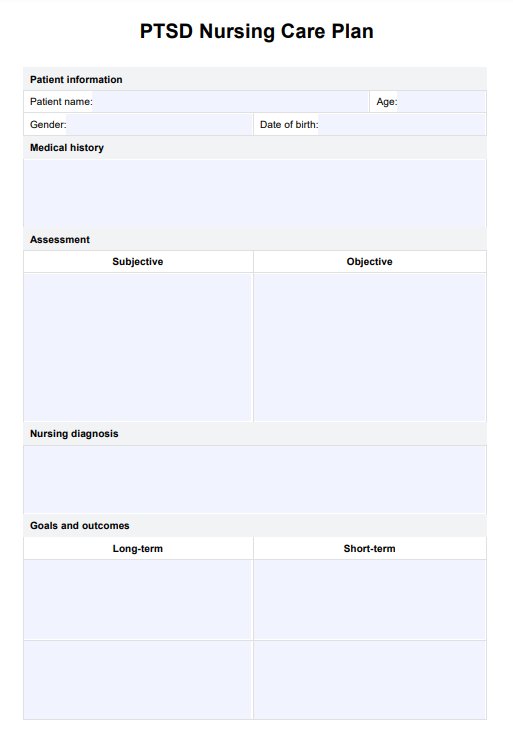Coping mechanisms, such as deep breathing and positive self-talk, are effective coping strategies that help PTSD patients manage their anxiety levels and reduce PTSD symptoms, contributing to overall psychological health.

PTSD Nursing Care Plan
Master PTSD care with our Nursing Plan Template. Download the free PDF for comprehensive strategies and real-world examples.
Use Template
PTSD Nursing Care Plan Template
Commonly asked questions
Selective serotonin reuptake inhibitors are commonly prescribed for mood disorders and anxiety management, as they can effectively reduce symptoms of mild anxiety and improve the psychological health of PTSD patients.
Techniques like deep breathing exercises and practicing positive self-talk can help alleviate anxiety levels, providing PTSD patients with effective coping strategies to handle distressing symptoms and improve their overall well-being.
EHR and practice management software
Get started for free
*No credit card required
Free
$0/usd
Unlimited clients
Telehealth
1GB of storage
Client portal text
Automated billing and online payments











